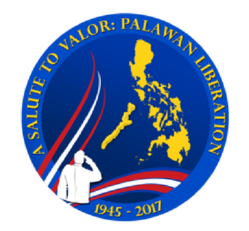Palawan Liberation
After General Douglas MacArthur withdrew from the
Philippines in March 1942, all of its islands fell to the Japanese. On October
20, 1944, he fulfilled his “I shall return” promise when he landed in Leyte to
liberate the island.
When MacArthur’s troops recaptured Samar and Leyte, the
liberation of Mindoro and Palawan soon followed. However, as his main goal
was to expel all the Japanese imperial forces occupying the entire archipelago,
Gen. MacArthur was not fully satisfied with their success in Leyte and Luzon.
Because of this, he launched operations codenamed VICTOR; these operations
aimed at recapturing every major bypassed island in the Southern Philippines,
including Palawan. It was crucial for them to gain control of the island
of Palawan because of its strategic location since it dominated the passages
between the southern Philippines and the West Philippine Sea. Its capture would
help them sever the Japanese supplies and serve as the supporting point for the
remaining operations.
Meanwhile, General Eichelberger designated the 41st Division under Maj. Gen. Jens A. Doe in the liberation of Palawan, Zamboanga, and the Sulu Archipelago. In preparation for the attack against Palawan, the 41st Division arrived at Mindoro from Biak (present day Indonesia) on February 9. The assault group of operation Victor III (also known as the Palawan Attack Group) was headed by Rear Adm. William M. Fechteler of the commanding Naval Task Force 78.2. The entire Palawan force numbered more than 8,000 troops and was composed of a regular infantry regiment, anti-aircraft units, engineers for the construction of airfields and other service force attachments. The Palawan force left Mindoro on February 26 and arrived at Puerto Princesa at 6:50 AM on February 28. As the troops continued to advance, it became evident that the Japanese troops had retreated into the hills.
The troops found the remains of 139 American prisoners of war (POW), who had surrendered or were captured in 1942, in two burned air-raid shelters in the old Philippine Constabulary (presently known as Plaza Cuartel). The said POWs were forced to work on the airstrip in Puerto Princesa. They were killed by the Japanese army in December, when their captors spotted the US invasion of Mindoro in December 1944 and mistakenly believed that Palawan was about to be invaded. This heinous massacre, as told by the few survivors, fuelled the troop’s determination to end the Japanese occupation. The Americans also feared that the other POWs would receive the same fate so they launched a series of POW rescue campaigns which resulted to The Great Raid.
It was not until March 2 that the retreating Japanese forces were contacted. From that time on, scattered Japanese units in Palawan were hunted down with the aid of organized guerrillas. The extensive Philippine resistance movement during that time was of great help as it opposed the Japanese with active underground and guerrilla activity that increased over the years. Particularly in Palawan, the Assistant Director of Iwahig Penal Colony, Pedro Pajie, was in charge of all underground activities against the Japanese in that area.
American troops were engaged in driving out enemy forces that forced the Japanese to withdraw further into the mountains. On March 6, General Eichelberger ordered General Haney to seize Busuanga and Culion Islands in the north of Palawan. One month later, the company landed in Busuanga where they killed 10 Japanese and scattered others. Culion, on the other hand, contained no enemies.
On March 9 reconnaissance troops went ashore on Dumaran Island and reported that the enemy had evacuated. U.S. engineers hurried to repair and improve the runway of airstrips near Puerto Princesa, which had once been an important link in the Japanese ferry and transport route to the Netherlands East Indies; however the construction did not proceed as rapidly as planned due to the soggy terrain and bomb craters. It was not until March 20 that the all-weather airstrip was put into operation. Small parties landed on Balabac Island on 16 April and Pandanan Island on April 22, 1945 both islands were occupied without incident and by that day the island of Palawan was liberated.
Source: National Historical Commission of the Philippines


